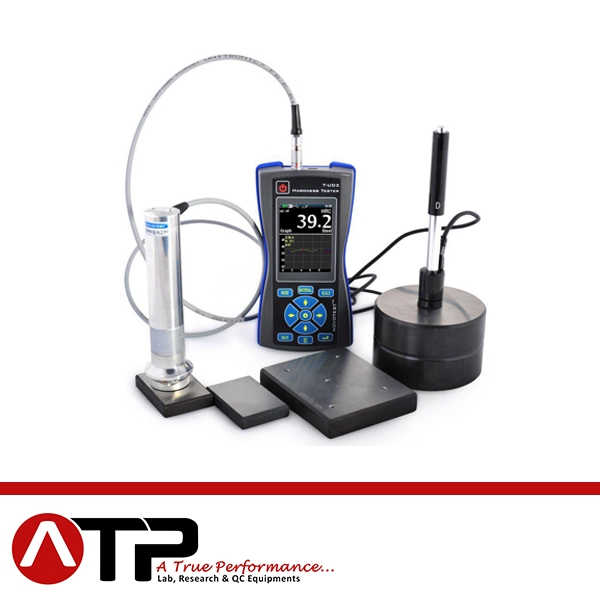The device operates both UCI (Ultrasonic Contact Impedance) and the Leeb (dynamic) probes. Getting benefit from two types of measurements is the ultimate advantage that a portable device can provide.
UCI method for the hardness testing
The UCI hardness measuring method complies to ASTM A1038.
The ultrasonic contact impedance (UCI) probe is purposed to be used for hardness measuring in the case of the testing area minimal thickness (from 1 mm), objects of complex surface shape, and for measuring surface hardened layers hardness.
This method is very fast and easy: place the probe on the tested object surface, press the probe with the required effort to the surface and save the hardness value, shown on the display of the device. Small size diamond indenter allows measuring hardness value of all items, which are thicker than 1 mm. The UCI method of hardness testing is the least destructive because the hardness tester NOVOTEST T-UD3 with UCI probe leaves much smaller prints (imprints) than the majority of bench hardness tester would. That’s why a portable hardness tester with UCI probe is the best choice.
Leeb method for the hardness testing
The Leeb hardness measuring method complies to ASTM A956.
The Leeb probe (D type) is used for hardness measuring of massive objects (more than 5 kg, and more than 10 mm) and made of steels non-ferrous metals, cast irons, coarse-grained materials, e.t.c. Also, Leeb method perfectly complements with UCI hardness measuring method when UCI method is not applied.
This method is very fast and easy: place the probe on tested object vertically to the object surface, push the probe to charge the spring, press the button on the top of the probe to make measurement and save the hardness value, shown on the display. For the Leeb measuring method, NOVOTEST-UD3 automatically calculates hardness for a wide range of materials, like steel, stainless steel, cast iron, bronze, aluminum.
The combined hardness tester is the most universal, needs no recalibration, and is fully operational “out of the box”.
When the measurements are made, the operator can take a photo of the sample with the built-in photo camera and place the results exactly where the measurements occurred (up to 5 results per picture).
The saved measurements results and pictures may be transferred to a PC using the “ARM” software, which supplied along with the hardness tester.
The hardness tester allows measuring the hardness at extremely low temperatures.
In reality, tests have been carried out at – 25°C. There was no problem to operate the device at all. Measurement accuracy did not exceed the accuracy standards. The Keyboard and display gave no troubles at all, and we found no difference using the device in the warm and cold environment!




